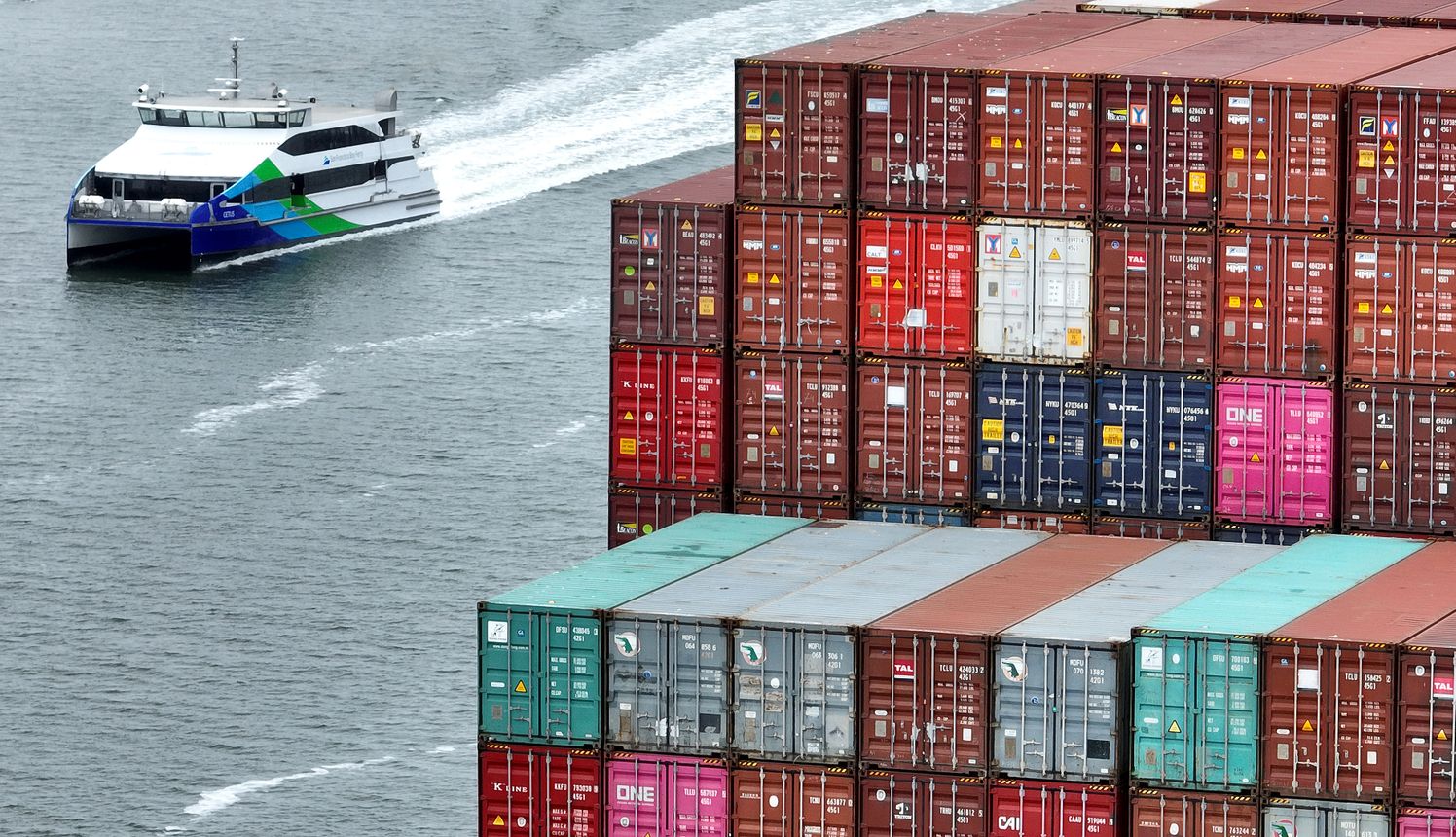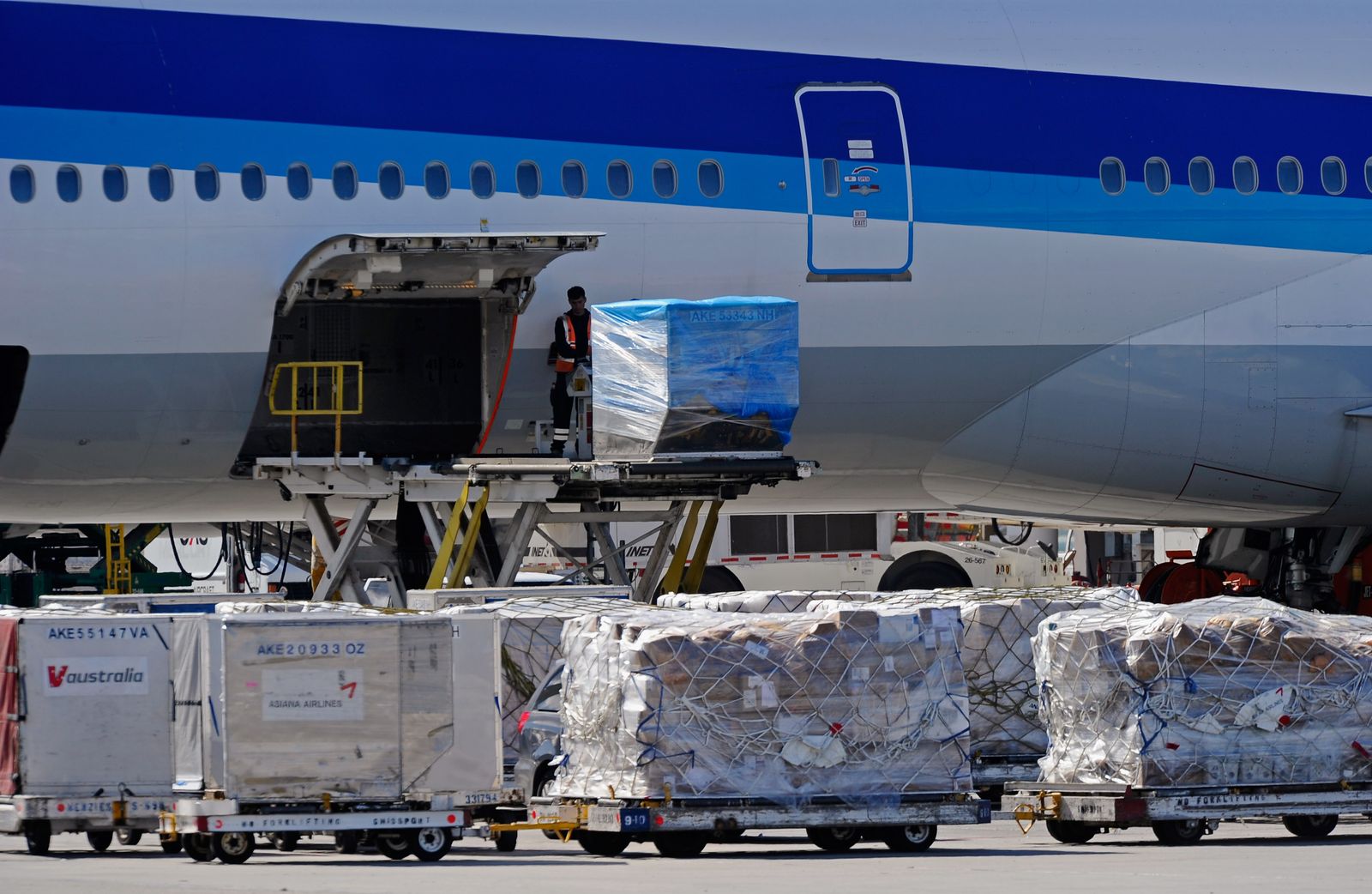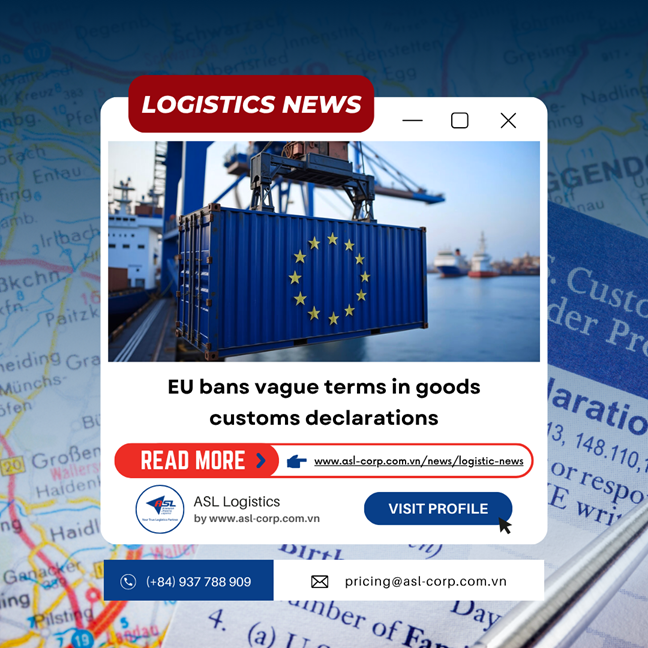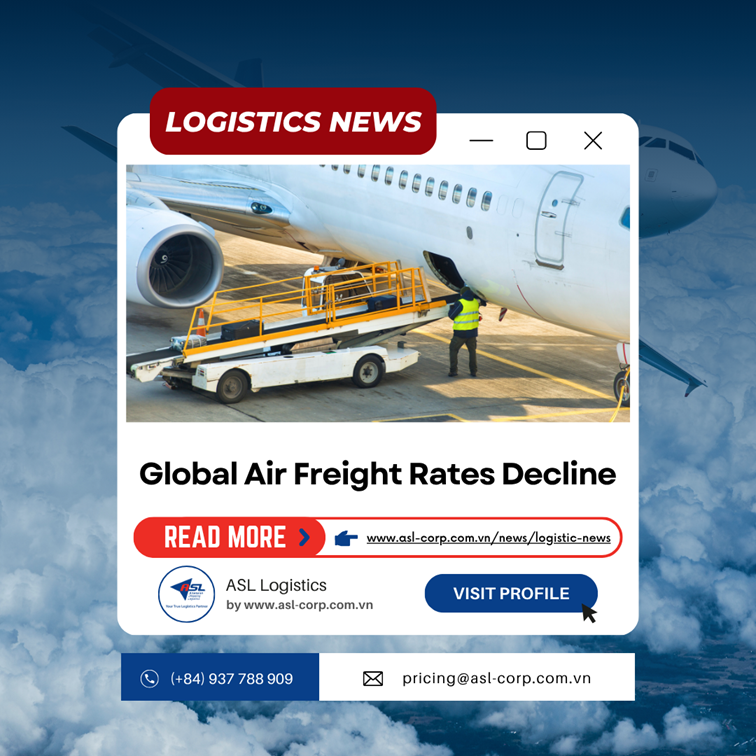Logistic News
8 LOGISTICS TRENDS TO WATCH IN 2024
23 February 2024
Risk is sparing no mode of transportation in 2024 as geopolitics, labor talks, freight demand and capacity fluctuations will continue to alter supply chain strategies.

Labor clashes, geopolitical risks and freight supply-demand misalignment are prompting logistics managers to reevaluate their supply chain strategies in 2024.
Transportation modes like sea and air shipping continue to be plagued by the Red Sea crisis, albeit in different ways. Meanwhile, as labor tensions prevail across several logistics sectors, logistics managers may need to remain flexible.
While conversing with several experts on the risks ahead for the year, Supply Chain Dive rounded up eight logistics trends to watch in 2024.
1. Red Sea crisis threatens rates
The ongoing situation in the Red Sea poses a challenge for ocean freight — with shipper concerns centering on rates and changes in vessel schedules.
“While we’re witnessing significant increases in indices and freight rates on specific routes, there’s a concern that carriers might leverage this disruption to hike overall sea freight pricing,” Patrick Lepperhoff, principal at Inverto, told Supply Chain Dive.
Since the vessel attacks along the Red Sea began, ocean shipping rates have gone up significantly and several carriers have implemented additional surcharges. Some shippers like Ikea have already reported delays as they face constraints for certain products.
Lepperhoff said even if the situation in the Red Sea returns to normal, shipping companies may face difficulties for months.
The Suez Canal blockage in 2021 lasted about six days and disrupted schedules of the ports in the Mediterranean and North Sea for months, he added. “This crisis has already lasted longer than that."

The Red Sea crisis has led ocean carriers to divert or delay shipments, causing longer lead times and elevated rates. - Justin Sullivan via Getty Images
2. Panama Canal restrictions add complexity
While drought restrictions at the Panama Canal continue, cargo diversions are happening and increasing the chances of delays.
Vessels traveling through the major waterway have been limited to 24 slots per day, according to a Dec. 15 advisory from the canal. The allotment is down from the pre-drought capacity of more than 30 ship transits per day. By February, authorities expect transit capacity will fall to 18 slots per day.
Shippers’ options have been complicated by the crisis in the Red Sea. Companies looking to import cargo from Asia to the U.S. East Coast may have looked to the Suez Canal as an alternative to the Panama Canal. But now that alternative is risky, too, after attacks on vessels traveling to the shipping channel through the Red Sea led major carriers to reroute ships or halt transit.
“Without access to the canals, customers face 30%-40% longer sailing times and higher costs to trade with Asia,” according to a Jan. 24 report from Moody’s Investors Service.
3. East Coast port labor talks loom large
Labor negotiations also continue to pose a risk for ocean shipping due to the pending East and Gulf Coast port labor talks.
The International Longshoremen’s Association labor contract with the United States Maritime Alliance is set to expire on Sept. 30. In a statement from the ILA, members were told to “prepare for the possibility of a coast-wide strike in October 2024.”
If a strike does occur, it could result in port congestion, Brian Whitlock, senior research director at Gartner, told Supply Chain Dive. It could also cause East and Gulf Coast ports to lose volume gained during the West Coast labor negotiations.
“So I think [labor actions are] going to continue to be high on the list of things that will impact not only ocean shippers, but other modes as well,” Whitlock said.
4. West Coast ports may experience heightened traffic
Drought-related restrictions in the Panama Canal, the duration of the Red Sea crisis, and East and Gulf Coast port labor uncertainty are among the reasons many analysts suspect U.S. West Coast ports should brace for a surge in volume in 2024 — and with it, potential congestion.
West Coast ports have already seen some volume gains as shippers reroute cargo. Port of Los Angeles Executive Director Gene Seroka said on Jan. 10 that West Coast market share is up 3% compared to East and Gulf Coast ports.
As volumes shift, intermodal consultant Lawrence Gross told Supply Chain Dive he would not be surprised if intermodal volumes moving through truck and rail also surged. However, heightened container traffic could also lead to some congestion, though capacity among trucking companies is plentiful and chassis have been added in anticipation of growth.
However, West Coast ports have been expecting cargo to rebound in 2024 and are preparing accordingly.
“Make no mistake about it — cargo has come back to the West Coast and we are not letting it go,” Port of Long Beach CEO Mario Cordero said Jan. 17 at the State of the Port 2024 event.
5. Overcapacity remains a problem for trucking companies
The trucking industry was contracting for much of 2023, with large and small carriers alike leaving the market due to bankruptcy, closure or acquisition.
Some experts expect the trend to continue in 2024. A high rate of transportation employment suggests there may still be too many drivers and companies competing for business during a soft freight market cycle, Jonathan Phares, assistant professor of supply chain management at Iowa State University, wrote in an email to Supply Chain Dive.
This bodes well for shippers, he said. Ample capacity may translate to spot and contract rates remaining flat.
While recent action from the Federal Reserve appears to have curbed inflation, it has not cooled manufacturing employment, Phares said. However, if interest rates remain high and industrial production cools, that could lead to reduced trucking demand and capacity.
Should this occur, Phares said shippers may see spot rates fall until demand exceeds trucking supply. Though if the Federal Reserve reduces rates and manufacturing production remains high, shippers may continue seeing low spot rates with plentiful capacity.
Fears of a UPS strike cast a long shadow over the last-mile delivery industry in 2023, and more labor risks could emerge this year in carrier networks. - Joe Raedle via Getty Images
6. Labor clashes a risk for parcel delivery networks
After contentious contract negotiations between UPS and the International Brotherhood of Teamsters last summer, this year is poised to see more clashes between management and labor in the parcel delivery sector.
FedEx Express and the union representing its pilots are still negotiating for a new contract agreement after members rejected a tentative deal in July. Mechanics at the FedEx unit are in the midst of an organizing drive to join the Teamsters. The labor union is also continuing its campaign to organize the workers that power Amazon’s massive logistics network, highlighting an unfair labor practice strike by delivery drivers at an Amazon contractor that ratified a union contract in 2023.
“Amazon better pay attention because there’s more to come,” Teamsters General President Sean O’Brien said last month.
Whether these battles cascade into operational disruptions remains to be seen. But even the threat of a strike is enough to send shippers scurrying to alternative carriers. FedEx snagged 400,000 packages’ worth of average daily volume from UPS due to the latter’s strike risk, EVP and Chief Customer Officer Brie Carere said in a December earnings call.
“We are tracking all accounts that … we won, specifically because of their concerns on the labor negotiations,” Carere said. “The vast majority of those had an early termination clause. And to my knowledge, we have not lost a single one of those accounts.”
7. Air forwarders eye growing e-commerce activity
The horizon remains hazy for the air cargo market, even as last year’s rapid decline in volumes leveled out in recent months.
Some anticipate 2024 returning to classic seasonality, albeit muted. While releasing Xeneta’s 2024 Air Outlook, Niall van de Wouw, chief airfreight officer at Xeneta’s Clive Data Services, noted that “2024 could be an opportunity for shippers to catch their breath after the volatility of the past few years.”
But just because turbulence may have subsided for the air cargo industry doesn’t mean there aren’t potential risks to watch out for.
“The biggest challenge will be capacity and the impact of the e-commerce players — most notably Shein, Temu, and Tik-Tok,” Marc Schlossberg, EVP of air freight at forwarder Unique Logistics, told Supply Chain Dive in an email. “Their appetite for capacity and willingness to pay any price to secure is pushing the traditional air freight shippers to the side. During the last 90 days of peak, e-commerce demand was peaking at a sustained 10,000 tons per day.”
Schlossberg further noted that e-commerce has a growth forecast of 20% to 30%, with these companies absorbing 30% or more of global capacity. Meanwhile, with technology running on a three-to-four year cycle and many upgrading their home offices during the pandemic, consumers may soon be looking to update their tech equipment.
“If a resurgent high tech market meets head on with the rising behemoths of e-commerce, things can get ugly quickly,” the EVP said.

Forwarders are tracking growing e-commerce activity and geopolitical risks in 2024. - Kevork Djansezian via Getty Images
8. Forwarders wary of geopolitical risk
Schlossberg added that ongoing geopolitical risks — like wars in the Middle East and Ukraine — make the market less predictable, and therefore more challenging to advise customers.
Trends like growing strike activity and U.S.-Mexico border congestion due to developing nearshoring activity are also on the list of possible market risks to keep an eye on, Mike Short, president of global forwarding at C.H. Robinson, told Supply Chain Dive.
While the air cargo market may lay at the mercy of e-commerce demand, geopolitical risks and other uncontrollable factors, shippers can still position themselves for success.
Schlossberg recommended hard block BSA and charter capacity, sea-air and air-sea consolidations and other charter products as possible mitigation measures for unprecedented disruptions.
Meanwhile, Short said to “focus on the events that require us to change the plan versus the plan itself.”
“Building in agility and developing contingency plans is really where we recommend shippers focus for 2024 planning,” he said. “We can’t predict the future, but we know that resiliency is key to keeping goods moving when planned or unplanned disruption occurs.”
Source: Larry Avila,, Max Garland,, Alejandra Salgado, and Kelly Stroh (SupplyChainDIve)

Head Office
ASL Hồ Chí Minh
Số 31/34A Ung Văn Khiêm, Phường Thạnh Mỹ Tây, TP. Hồ Chí Minh, Việt Nam
 Công Ty Cổ Phần Giao Nhận Vận Tải Mỹ Á
Công Ty Cổ Phần Giao Nhận Vận Tải Mỹ Á
 (+84)28 3512 9759
(+84)28 3512 9759
 (+84)28 3512 9758
(+84)28 3512 9758
 pricing@asl-corp.com.vn
pricing@asl-corp.com.vn
 mdirector@asl-corp.com.vn
mdirector@asl-corp.com.vn
 www.asl-corp.com.vn
www.asl-corp.com.vn
LOGISTICS SERVICES










.png)
.png)

.png)





